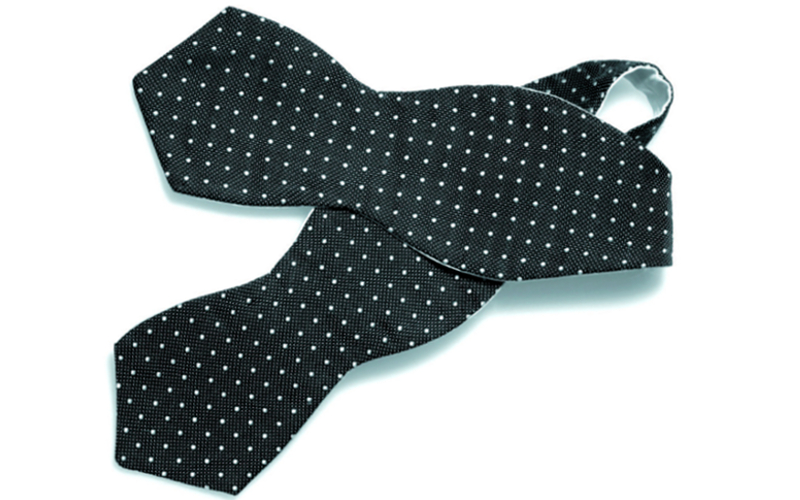Black Tie. Or Cravat Noire, if your host has a playfully cosmopolitan flair. The invitation sparks an intoxicating sense of excitement and anticipation. At the same time, it stirs an uneasy dread and a tinge of fearful apprehension.
And rightly so. Black Tie is, after all, far more than a social invitation. It communicates a sartorial eloquence mastered by few. It is the unspoken but universally understood mandate to arrive properly and appropriately attired—a daunting challenge for both neophytes and those who only occasionally tinker in the ilk of uber-festivities requiring the social gravity and protocol of “Evening Dress.”
Black Tie heralds uniquely special affairs, those reserved exclusively for occasions of Old World grandeur, opulent celebration and festive revelry. Little wonder, then, that satisfying the fashion demands of Black Tie should cause an intimidating and dispiriting sense of fashion insecurity even among the most self-confident. It is serious and deliberate dress fashioned by monarchs, governed by royal protocol and dictated by decades of social custom and ceremony. It is pomp and circumstance—and never to be taken lightly.
For most, Black Tie and tuxedo are synonymous. In England, it is called a dinner jacket. In France, where it is worn in private men’s clubs, it is called le smoking. In Scotland, it is paired with a kilt. And in Bermuda, it is worn with knee-length shorts. Like the chic “little black dress,” the tuxedo is itself the ultimate expression of sophisticated elegance. And like all icons, its timeless design and refined styling is almost always corrupted and spoiled—and seldom improved—by trendy tinkering. That explains the small tolerance given by purists to fad-of-the-moment interpretations.
After dark, or 6:00 p.m.—whichever arrives first—is the traditional bewitching hour when Black Tie is deemed appropriate fashion. White Tie, or Cravat Blanche, on the other hand, does not mean a white dinner jacket, or even a white bow tie with a black tuxedo jacket, as many fashionistas mistakenly think. Instead, White Tie means “full evening dress.” Tailcoat, in other words. Or “tails,” as it is known by its most widely recognized moniker. The type of formal attire an affair requires is clearly stated via the color of bow tie—just remember that White Tie means tailcoat and Black Tie means a tuxedo.
Translating appropriate Black Tie fashion is equally simple. Despite the imposing look of its pomp and circumstance, overcoming that initial, intimidating rush of fashion insecurity that accompanies a formal invitation is accomplished via a simple list of easy-to-remember guidelines that are more social custom than hard-and-fast rules. But once learned, they are the framework for creatively cobbling together your own personal style.
For starters, anyone who wears a suit should not fear a tuxedo. A tuxedo, after all, is little more than a business suit, albeit a more elegant version reserved for evening and adorned with regal detailings. To offset a crowded ballroom’s often stifling heat and offer an added measure of comfort while dancing, tuxedos are typically a lighter weight fabric than business suits. And while “tuxedo” refers to the jacket, it also includes pants and furnishings, along with accessories and footwear.

